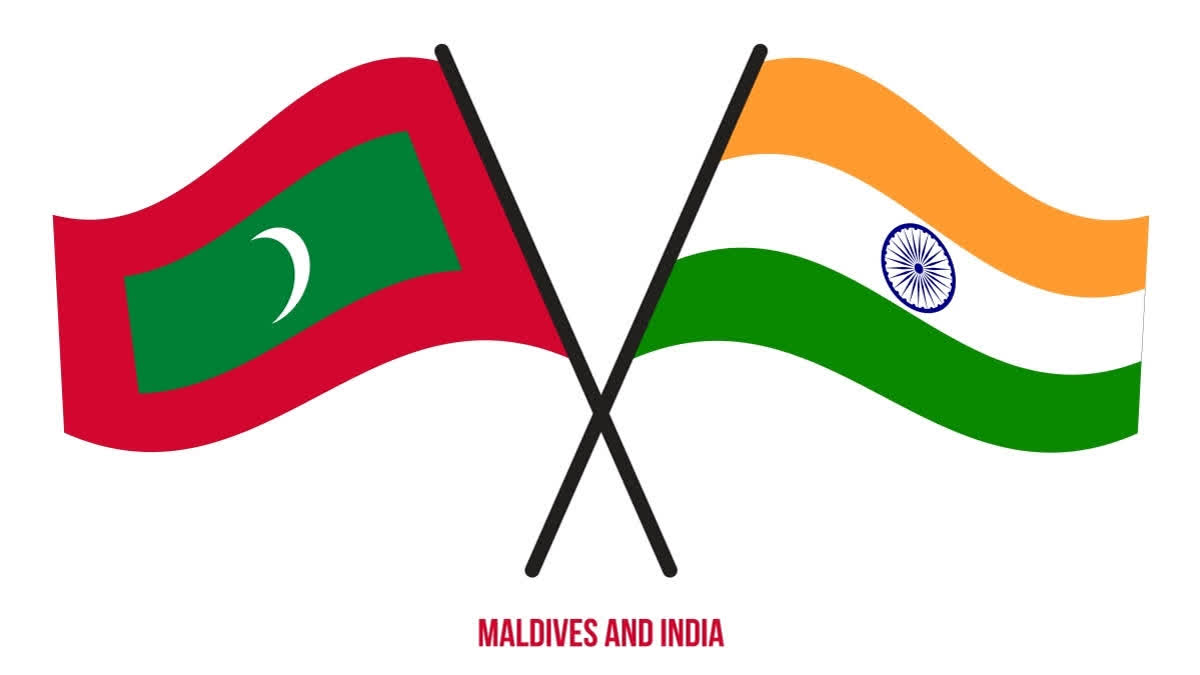New Delhi: Among the slew of announcements made following bilateral talks between Prime Minister Narendra Modi and visiting Maldives President Mohamed Muizzu here on Monday was one on India’s decision to develop the proposed Thilafushi port in the Indian Ocean archipelago nation.
“Support will also be provided (by India) in the development of a new commercial port in Thilafushi,” Modi said while jointly addressing the media after the discussions.
A vision document titled ‘India and Maldives: A Vision for Comprehensive Economic and Maritime Security Partnership’ issued on the occasion stated that the two sides decided “to collaborate in the development of a state-of-the-art commercial port at Thilafushi island in order to de-congest the Male port and provide enhanced cargo handling capacity at Thilafushi”.
Thilafushi is actually an artificial island located to the west of the Maldives’ capital city Male. It was created following a government decision in 1991 to be used primarily as a municipal landfill to cater to management of waste emanating out of Male.
During its early years of waste disposal operations, pits were dug, after which the sand obtained from the excavation was used to construct walled enclosures around the internal perimeter of the cells. Waste received from Male was deposited into the midst of the pit, which was topped off with a layer of construction debris and then uniformly levelled with white sand. Initially there was no segregation of the waste since it had to be disposed immediately due to mass accumulation.
Today, Thilafushi has a landmass of more than 4.6 million sq ft (0.43 sq km). The speedy terrestrial growth of Thilafushi was observed by the government, and in November 1997, it was decided that land was to be leased to entrepreneurs interested in acquiring land for industrial purposes. Over time, the island has developed into an industrial zone, housing warehouses, workshops, and factories.
Initially, the plan was to develop a port in the nearby Gulhifalhu island to decongest the Male port. However, in March 2015, the Maldivian government decided to relocate the central commercial port from Male to Thilafushi, a project that has not materialised till now.
With India entering the picture now, the project has gone one step closer to reality. The Thilafushi port is expected to be a modern, deep-water, and fully equipped facility capable of accommodating large container ships. It will aim to enhance cargo handling efficiency, serve as a hub for regional transshipment, strengthen the country’s logistical infrastructure, increase trade volumes and reduce the cost of imports and exports.
India’s decision to assist in the development of the Thilafushi port in the Maldives can also be seen as part of a larger strategy that seeks to strengthen its influence in the Indian Ocean region and deepen its bilateral relations with its neighbours. As the Maldives undertakes this major infrastructure project, India’s involvement brings a host of strategic, economic, and geopolitical benefits. These advantages stem not only from India’s close proximity to the Maldives but also from broader concerns regarding maritime security, trade, and regional balance of power, particularly in the context of China’s growing influence.
“India’s strategic interest in the Maldives and small island nations in the Indian Ocean has become a priority in the context of New Delhi’s interests in the Indo-Pacific,” K Yhome, Fellow at the Shillong-based Asian Confluence think tank and an expert on Indo-Pacific issues, told ETV Bharat. “The Maldives is our next door neighbour and is in the central Indian Ocean. India has been collaborating with the Maldives on maritime security for a long time now.”
